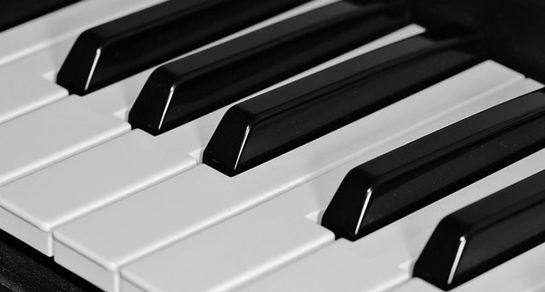
by Jnmarseille13 (March 24, 2022)
by Jnmarseille13 (March 24, 2022)
Whether you make sample-based music or original sounds, you will come across this notion called “sound envelope”.

This is a very simple concept, but it might look a bit confusing when you’re seeing this for the first time. We are going to look at the most common type of envelope generator: ADSR. ADSR stands for attack, decay, sustain, and release.
The sound envelope can be described as the evolution of the sound of an instrument, synth, or a one-shot sample throughout a very short amount of time. Let’s take a simple example: hit a piano key once, then blow a whistle once: you will notice that the sound of the piano starts very brutally and ends smoothly, whereas the sound of the whistle starts soft and ends as soon as soon as you stop blowing.
There are different parameters that envelopes can be related with, such as amplitude (the main shape of the sound/signal, in dB), frequency (if you have a filter applied on the sound, in Hz), pitch etc. We are going to focus on amplitude envelope, because I believe this is easier to understand if you’re just starting out.
So, we are going to see how ADSR envelope generators work. Let’s start now!

The attack is the first part of a sound. It determines how long it will take for the sound to reach its peak level (volume, in the case of amplitude envelopes). The higher you set it, the longer it will take. The lower you set it, the quicker it’ll kick off.
You might want to set it high when you’re trying to create a rising sound, or something that can create suspense. On the other hand, setting it low will be interesting for brutal sounds, or things can create a surprise effect.
Let’s go back on the example from earlier: the piano. Its natural envelope will consist of a very low attack.

The reason why I put these 2 together is because they complete each other, and one of the parameters is meaningless without the other one.
The decay is the amount of time needed to go from the attack part to the sustain level. The sustain parameters is the main level that the signal will keep during its main phase, until the signal will be released.
The main difference between the sustain and the other 3 is that it refers to level, and not time, unlike the others.
The release is the final stage of the signal. It refers to when the signal ends. If you set it high, you will have a long progressive ending, kind of like a “phase out” effect. But if you set it low, you will have a very brutal and dry ending. Let’s go back to the previous example with the piano and the whistle.
When you release your finger from a piano key, you’ll notice that you can still hear its sound fading out. This is the equivalent of a high release. But if you compared to the whistle, it stops as soon as you stop blowing. This is the equivalent of a low release.
The ADSR is one among many envelope types, but most likely the one you will come across the most. You might as well come across variations of that, such as AHDSR (where the H stands for “hold” and will determine how long the signal stays at full level before hitting the decay phase) or DADSR (where the first D stands for “delay”, which will the amount of time between the moment where the signal is launched and the actual attack) and more.
To get a better understanding of how ADSR envelope generators work, you will need to have your hands on it. In my opinion, amplitude envelopes are easier to learn, as you will be editing the actual “shape” of a sound. Then when you got this, understanding how to generate envelopes for other elements such as frequencies or pitch will be easy.
Have fun with that! 😊
Whether you make sample-based music or original sounds, you will come across this notion called “sound envelope”.

This is a very simple concept, but it might look a bit confusing when you’re seeing this for the first time. We are going to look at the most common type of envelope generator: ADSR. ADSR stands for attack, decay, sustain, and release.
The sound envelope can be described as the evolution of the sound of an instrument, synth, or a one-shot sample throughout a very short amount of time. Let’s take a simple example: hit a piano key once, then blow a whistle once: you will notice that the sound of the piano starts very brutally and ends smoothly, whereas the sound of the whistle starts soft and ends as soon as soon as you stop blowing.
There are different parameters that envelopes can be related with, such as amplitude (the main shape of the sound/signal, in dB), frequency (if you have a filter applied on the sound, in Hz), pitch etc. We are going to focus on amplitude envelope, because I believe this is easier to understand if you’re just starting out.
So, we are going to see how ADSR envelope generators work. Let’s start now!

The attack is the first part of a sound. It determines how long it will take for the sound to reach its peak level (volume, in the case of amplitude envelopes). The higher you set it, the longer it will take. The lower you set it, the quicker it’ll kick off.
You might want to set it high when you’re trying to create a rising sound, or something that can create suspense. On the other hand, setting it low will be interesting for brutal sounds, or things can create a surprise effect.
Let’s go back on the example from earlier: the piano. Its natural envelope will consist of a very low attack.

The reason why I put these 2 together is because they complete each other, and one of the parameters is meaningless without the other one.
The decay is the amount of time needed to go from the attack part to the sustain level. The sustain parameters is the main level that the signal will keep during its main phase, until the signal will be released.
The main difference between the sustain and the other 3 is that it refers to level, and not time, unlike the others.
The release is the final stage of the signal. It refers to when the signal ends. If you set it high, you will have a long progressive ending, kind of like a “phase out” effect. But if you set it low, you will have a very brutal and dry ending. Let’s go back to the previous example with the piano and the whistle.
When you release your finger from a piano key, you’ll notice that you can still hear its sound fading out. This is the equivalent of a high release. But if you compared to the whistle, it stops as soon as you stop blowing. This is the equivalent of a low release.
The ADSR is one among many envelope types, but most likely the one you will come across the most. You might as well come across variations of that, such as AHDSR (where the H stands for “hold” and will determine how long the signal stays at full level before hitting the decay phase) or DADSR (where the first D stands for “delay”, which will the amount of time between the moment where the signal is launched and the actual attack) and more.
To get a better understanding of how ADSR envelope generators work, you will need to have your hands on it. In my opinion, amplitude envelopes are easier to learn, as you will be editing the actual “shape” of a sound. Then when you got this, understanding how to generate envelopes for other elements such as frequencies or pitch will be easy.
Have fun with that! 😊